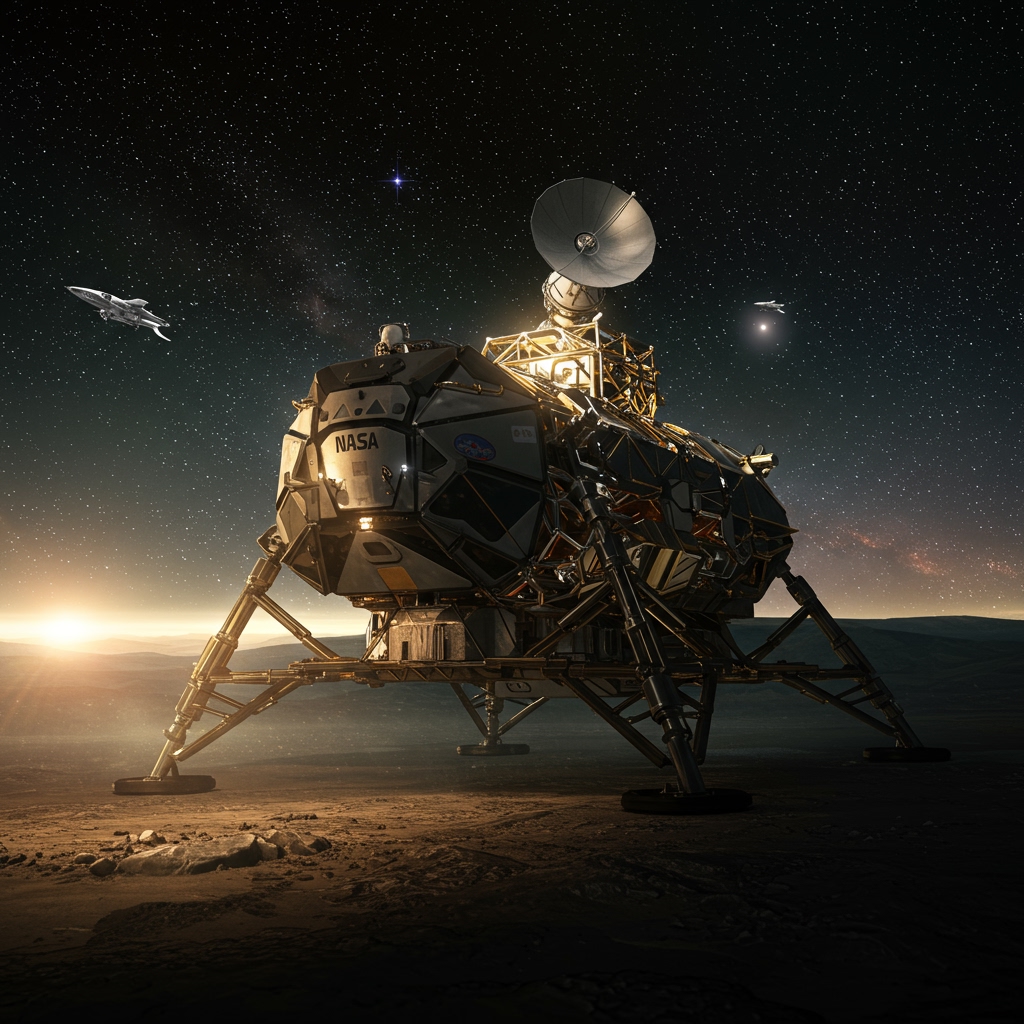NASA Approves Key Lunar Lander Modifications for Artemis III Mission
Washington D.C. – In a significant development for NASA’s ambitious Artemis program, the agency today announced the formal approval of crucial modifications to the SpaceX Starship Human Landing System (HLS) designed for the upcoming Artemis III mission. NASA Administrator Bill Nelson delivered the announcement, highlighting this milestone as a vital step toward returning humans to the lunar surface.
The Artemis III mission, currently targeting a mid-2026 window, aims to achieve a historic crewed lunar landing, marking the first time astronauts have set foot on the Moon since the conclusion of the Apollo program in 1972. The approval of these modifications underscores NASA’s commitment to ensuring the safety and success of this landmark endeavor.
Addressing Key Concerns Through Design Evolution
The modifications approved today are the result of extensive review and testing processes. According to the agency, these changes directly address previous concerns regarding crew accessibility and power redundancy that were identified during earlier reviews of the Starship HLS design. Ensuring astronauts can safely and efficiently ingress and egress the vehicle in the lunar environment is paramount, as is guaranteeing sufficient and reliable power supply for all critical systems throughout the demanding mission profile.
NASA and SpaceX have been working collaboratively to refine the HLS design based on these findings. The approved modifications represent the implemented solutions to enhance the lander’s functionality and reliability for a crewed mission.
Successful Testing Paves the Way for Approval
Formal approval followed successful structural and systems testing conducted at NASA’s Kennedy Space Center in Florida. These tests are critical for validating the integrity of the lander’s structure under simulated lunar conditions and verifying the performance of its complex systems, including the newly modified components. The successful completion of this rigorous testing phase provided NASA with the necessary data and confidence to formally approve the design changes, clearing a major programmatic hurdle.
Testing involved evaluating how the revised HLS architecture performs under various loads expected during transit, descent, lunar operations, and ascent. System-level tests verified the proper functioning of critical subsystems, including power distribution, life support interfaces, and control systems, particularly focusing on the robustness of the power redundancy measures and the mechanisms related to crew access.
Artemis III: Returning Humanity to the Moon
The Artemis III mission is poised to be a generational event. As the first crewed lunar landing in over five decades, it represents a powerful statement of human capability and aspiration. The mission plans call for the HLS, after launching separately and rendezvousing with the Orion spacecraft in lunar orbit, to transport two astronauts to a landing site near the lunar South Pole. These astronauts are expected to conduct scientific experiments, explore the surface, and gather samples during several days on the Moon before returning to orbit to rejoin Orion for the journey back to Earth.
The selection of SpaceX’s Starship as the HLS for Artemis III was a competitive process, and its unique design – leveraging the company’s experience with large-scale reusable rockets – presents both opportunities and technical challenges. Today’s approval signifies progress in maturing this innovative system for human spaceflight requirements.
A Crucial Step in a Larger Vision
This approval is not just about a single mission; it marks a crucial step in the United States’ plan to establish a sustainable presence on the Moon. The Artemis program envisions a series of increasingly complex missions, building infrastructure and learning to live and work on the lunar surface and in orbit around it. The HLS is a foundational element of this strategy, providing the essential link between lunar orbit and the surface.
The ability to reliably transport crew and cargo to and from the Moon’s surface is indispensable for building out this sustainable presence, which includes potential future lunar bases, scientific outposts, and resource utilization activities. The successful development and operation of the Starship HLS are therefore central to realizing the broader goals of the Artemis program.
Looking Ahead: Integrated Verification
With the design modifications approved and tested, the program is now moving towards the next critical phase: integrated system verification testing. This comprehensive testing is scheduled for late 2025 and will involve testing the various components and systems of the Artemis III mission architecture together as an integrated unit, insofar as possible before the actual mission. This phase will ensure that the HLS, Orion spacecraft, Space Launch System (SLS) rocket, ground systems, and flight control work seamlessly together.
Integrated testing will simulate key mission phases and scenarios, verifying interfaces and operational procedures. It is the final major testing hurdle before the hardware is deemed ready for the crewed mission. Successful completion of these tests is essential for maintaining the mid-2026 target window for the Artemis III landing.
The formal approval of the Starship HLS modifications represents a significant technical and programmatic achievement for NASA and SpaceX. It demonstrates progress in overcoming design challenges and validates the testing efforts undertaken to ensure the safety and capability of the vehicle that will carry astronauts back to the lunar surface for the first time in over 50 years, furthering the long-term vision of a sustainable lunar presence.





